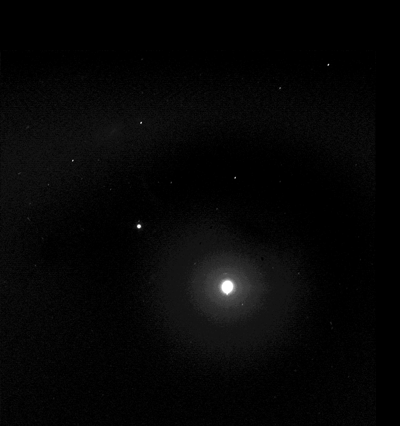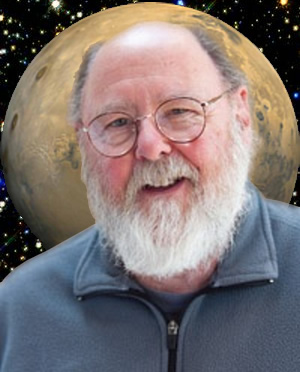Spirit Rover Captures Animation of Martian Moons

The Spirit Mars rover perched high atop Husband Hill at Gusev Crater is stargazing.
Imagery released September 9 by the NASA/Jet Propulsion Laboratory in Pasadena, California show the two moons of Mars - Phobos and Deimos cutting across the martian night sky. The unique pictures come courtesy of the Spirit robot, using its onboard camera system to take longing looks at the parade of celestial objects as they flew overhead.
An animation has been produced showing both martian moons: Deimos on the left and Phobos on the right - as they travel across the night sky in front of the constellation Sagittarius. Part of Sagittarius resembles an upside-down teapot. Phobos is the brighter object on the right; Deimos is on the left.
Spirit acquired the enhanced-brightness images with its panoramic camera on the night of August 26, 2005.
According to Jim Bell of Cornell University in Ithaca, New York, by collecting images of the two moons scientists can better chart their orbital positions and learn more about the composition of the Mars-orbiting bodies. Bell is lead scientist for the panoramic cameras on both the Spirit and Opportunity Mars rovers now scouting about on the red planet.
Also released is a sequence of images of Mars' largest moon, Phobos.
The first two images in the sequence show gradual enhancements in the surface detail of Phobos, made possible through a combination technique known as "stacking."
Breaking space news, the latest updates on rocket launches, skywatching events and more!
This procedure uses a mathematical process known as "Laplacian sharpening" to reinforce features that appear consistently in repetitive images and minimize features that show up only intermittently.
In the image sequence, the large crater named Stickney is just out of sight on the upper right limb of Phobos.
The third image in the sequence was derived from the far right image by making it blurrier for comparison with the panoramic camera images to the left.
Another use of this nighttime imagery is to look for the presence of nighttime clouds or haze.
The ability of Spirit to become a nighttime skywatcher on Mars is the rover's extra solar energy collected during the day.
- Mars Rover Special Report

Leonard David is an award-winning space journalist who has been reporting on space activities for more than 50 years. Currently writing as Space.com's Space Insider Columnist among his other projects, Leonard has authored numerous books on space exploration, Mars missions and more, with his latest being "Moon Rush: The New Space Race" published in 2019 by National Geographic. He also wrote "Mars: Our Future on the Red Planet" released in 2016 by National Geographic. Leonard has served as a correspondent for SpaceNews, Scientific American and Aerospace America for the AIAA. He has received many awards, including the first Ordway Award for Sustained Excellence in Spaceflight History in 2015 at the AAS Wernher von Braun Memorial Symposium. You can find out Leonard's latest project at his website and on Twitter.
